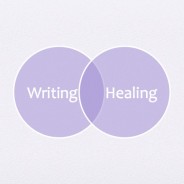How Much Does a Person Need to Write to Experience a Healing Benefit?
Possible Answers: 1. The most true answer: No one knows. 2. What the research says: Studies have shown that as little as 60 to 80 minutes of writing—twenty minutes on three to four consecutive days—can create positive benefits when it comes to health. (For instance, in the study on fibromyalgia and writing, a mere sixty minutes of writing—twenty minutes on three days—led to a decrease in pain and fatigue and an improvement in psychological well-being four months after writing. This benefit was not sustained, though down the road, ten months after writing. Which points, I think, to a good reason to sustain the writing over time.) 3. A nice round number: 90 minutes a week. Writing some number of minutes every week can foster the growth and development of the writing. It can also, potentially, allow the health benefits to be sustained, and perhaps, even, to begin to accrue. 90 minutes a week could be accomplished by writing 15 minutes a day 6 days a week. Or 30 minutes on 3 days. Any more than this could be gravy. And less could be worked with if need be. 4. The most practical answer: Write when you can. I suspect that one sentence a month, if written from a place of honesty, has the potential to make a difference to the process of healing, and—who knows?—perhaps one word can. The best advice I ever received about writing came to me when I was in high school from a teacher who told me, “If you want to be a writer then what you must do is to write every day, even if it is only to write, ‘I’m too tired to write today.’” If you want to practice writing for the purpose of healing, you might want to consider writing every day, even if it is only to write that you are too tired to write. (Of course if you find yourself with just a tiny bit more energy you could write another sentence, perhaps a bit about why you are tired, or perhaps a few lines about where you wish you could go to find rest.) Note: in the classic Pennebaker study on writing and health, college students who wrote for twenty-minute sessions on only four occasions reaped health benefits. Many other studies have used this twenty-minute increment of writing as well. Photo is from a print, Wind Flower by Deborah Schenck...
read more




